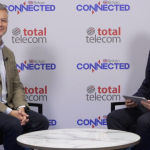Viewpoint
The role of the operators continues to evolve in the growing digital economy. Moving from providing just basic connectivity solutions, 5G allows them to become the cornerstone of the all-pervasive digital ecosystem.
"As ICT infrastructure providers, operators will become the cornerstone of the digital economy. We can evaluate the vitality of the digital economy by looking at three factors: connection density, computing diversity, and carbon reduction. These three factors give operators the levers they can use to shape the future of the digital economy," says Ryan Ding, Executive Director, President of the Carrier BG, Huawei in his address at the Mobile World Congress 2022. Huawei is proposing the concept of GUIDE, a blueprint of doing business in the new digital economy.
The global digital economy continues to grow rapidly, with more than 50% of global GDP likely to be digitalized in 2022. It is then not surprising that several economies, like the EU, China and South Korea, have announced massive investments to boost the digital economy.
He explains that the operators have a crucial role to play in all three factors. While in connections, operators can grow their 5G user base and expand their business scope; in computing, they can create
synergies with IT to drive industry digitalization, and in carbon reduction, operators can use Huawei’s green ICT solutions to deliver more bits with fewer watts.
The 5G Factor
The rapidly growing 5G deployment is not just helping operators increase the number of users but also accelerating the industry’s digitalization. By the end of 2021, 200 operators have deployed
commercial 5G networks, servicing more than 700 million 5G users.
Fixed Wireless Access (FWA) is emerging as one of the most critical 5G use cases, with around 83 operators already offering commercial 5G FWA services, reading over 3 million users by the end of 2021.
"The 5G pioneers have achieved remarkable commercial success. In 2021, leading 5G operators, like the three major operators in China, LG U+ in South Korea, and Zain in Kuwait, all saw their revenue grow," says Ding.
He emphasized the need for the evolution of innovative business models in the success of 5G. Sharing the example of China Mobile’s Zhejiang pricing model Ryan Ding says, "Their 4G plan costs 20 US dollars for 20 GB of data. Their 5G plan costs just four dollars more but offers twice the amount of data. This is a win-win result for both parties. For the user, the price for data is 40% less per GB. For the operator, ARPU is up 20%, and the cost per bit drops 80%."
5G is unlike any other previous technology and is playing a crucial role in speeding up industry digitalization. This opens up new revenue opportunities for the operators in private wireless access to industry applications. More than 30 operators have already provisioned over 60,000 private lines.
"5GtoB private lines are a good way to grow operators’ B2B services and are helping industries become more efficient. By the end of 2021, Chinese operators and Huawei had signed over 3,000 commercial 5GtoB contracts. In 2022, we will continue sharing our successful 5GtoB applications around the world," says Ryan Ding.
Creating Synergies between connectivity and IT
In the 5G economy, the operator will play a crucial role in helping industries leverage digital technologies for growth. This can be done by creating synergies between connectivity and IT. Ryan Ding emphasizes three types of synergies: the first is between IT and CT synergy; the second is between cloud and edge synergy, and the third is between cloud and network synergy.
5G is driving data growth in operators’ IT and CT, which demands more efficient and unified storage. In this regard, he highlighted that an operator in Indonesia used Huawei’s OneStorage solution to bring down the total cost of innovation by 30%.
Giving an example of the synergy between cloud and edge, Ryan Ding says, "In Hungary, Vodafone and Huawei deployed an edge core solution for the East-West Gate railway project. This solution guarantees a low latency of 20 milliseconds, supporting remote crane operations. It has improved the East-West Gate terminal’s efficiency by four times.
Another example of cloud and network synergy is Hunan Valin Iron and Steel saving as much as two million US dollars a year by using China Mobile’s 5G plus cloud and edge computing solution.
Using technology to driving sustainability
ICT is helping all the industry verticals bring down their carbon emissions and the telecom industry must take the lead in adopting sustainable solutions to realize the vision of net-zero. Huawei’s green strategy is centered around `more bits, less watts.’
"We are implementing this green strategy with a three-layer approach, that is, green sites, green networks and green operations. Our green solutions have been used in networks around the world. In Poland, we worked with a local operator to deploy green, solar-powered sites. Now, each site emits 40% less carbon each year," explains Ryan Ding.
The year 2022 will see operators leveraging 5G and ICT to capture emerging opportunities in the digital economy to reach the next level of growth.
















